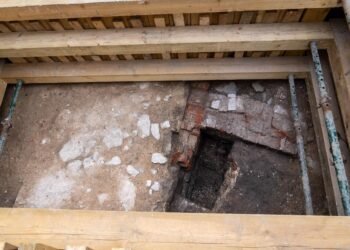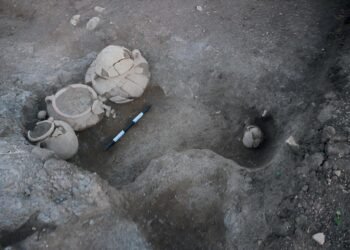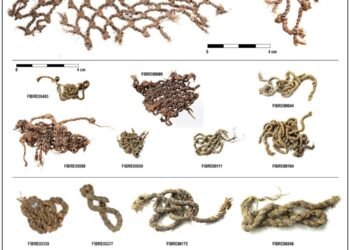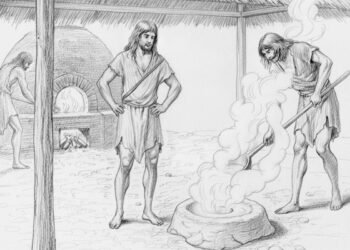Czech archaeologists have unearthed a long-lost tomb belonging to Ptahshepses, an ancient Egyptian official who lived around 4,400 years ago during the 25th and 24th centuries BCE. This remarkable find includes the mummified remains of Ptahshepses, marking an important historical and archaeological milestone.

The tomb was initially uncovered about 160 years ago by the French scholar Auguste Mariette, who revealed a false door and a lintel, both richly adorned, and later placed these artifacts on display in the British Museum. However, the tomb was subsequently buried under desert sands, only to be rediscovered recently by Czech archaeologists from the Czech Institute of Egyptology at Prague’s Charles University. Their efforts to locate the tomb involved the use of satellite imagery and the examination of old maps, culminating in its rediscovery in 2022.
A highlight of this rediscovery is the mummified remains of Ptahshepses himself, found within a partially opened sarcophagus.
Ptahshepses’s tomb is of considerable historical importance. The false door, a symbolic entrance used by the deceased to traverse between the worlds, is engraved with a detailed biography of Ptahshepses. This account narrates his education at the court of Menkaure, an ancient pharaoh who lived during Egypt’s Old Kingdom, which spanned from around 2700 BCE to 2200 BCE.
The archaeological work conducted at the tomb site has further corroborated the historical significance of Ptahshepses. His biography revealed insights into a period marked by various crises in the kingdom, including issues such as a compromised social contract, climate change, leadership challenges among the ruling elite, nepotism, rising expenses, and the loss of an affordable source of fuel for growth. One significant factor contributing to these challenges was a decline in the annual flooding of the Nile, which led to lower tax revenue at a time when expenses were increasing.
This decrease in annual flooding played a substantial role in the eventual collapse of the Old Kingdom. The flooding of the Nile was a critical source of sustenance, as it resulted in bountiful harvests and abundant tax revenue, with grain serving as a primary form of currency. It financed state-sponsored projects, including wages for workers and the distribution of bread rations.
Furthermore, according to the Czech Institute of Egyptology, Ptahshepses’s unique historical significance is underscored by the fact that he married the daughter of Pharaoh Userkaf, indicating he was the first non-royal official in Egyptian history given the privilege of marrying a royal daughter. This marriage was a significant event.
Excavations at the site uncovered a 137-foot-long and 72-foot-wide superstructure of the tomb. It comprises a well-preserved chapel adorned with painted decorations, an access corridor, and even a mummified fish. While the burial chamber had been looted in antiquity, it still contained traces of the original burial ceremony, including pottery and votive offerings.
Archaeologists continue their work at the site, aiming to uncover more details about Ptahshepses’s life and the times he lived in.






















